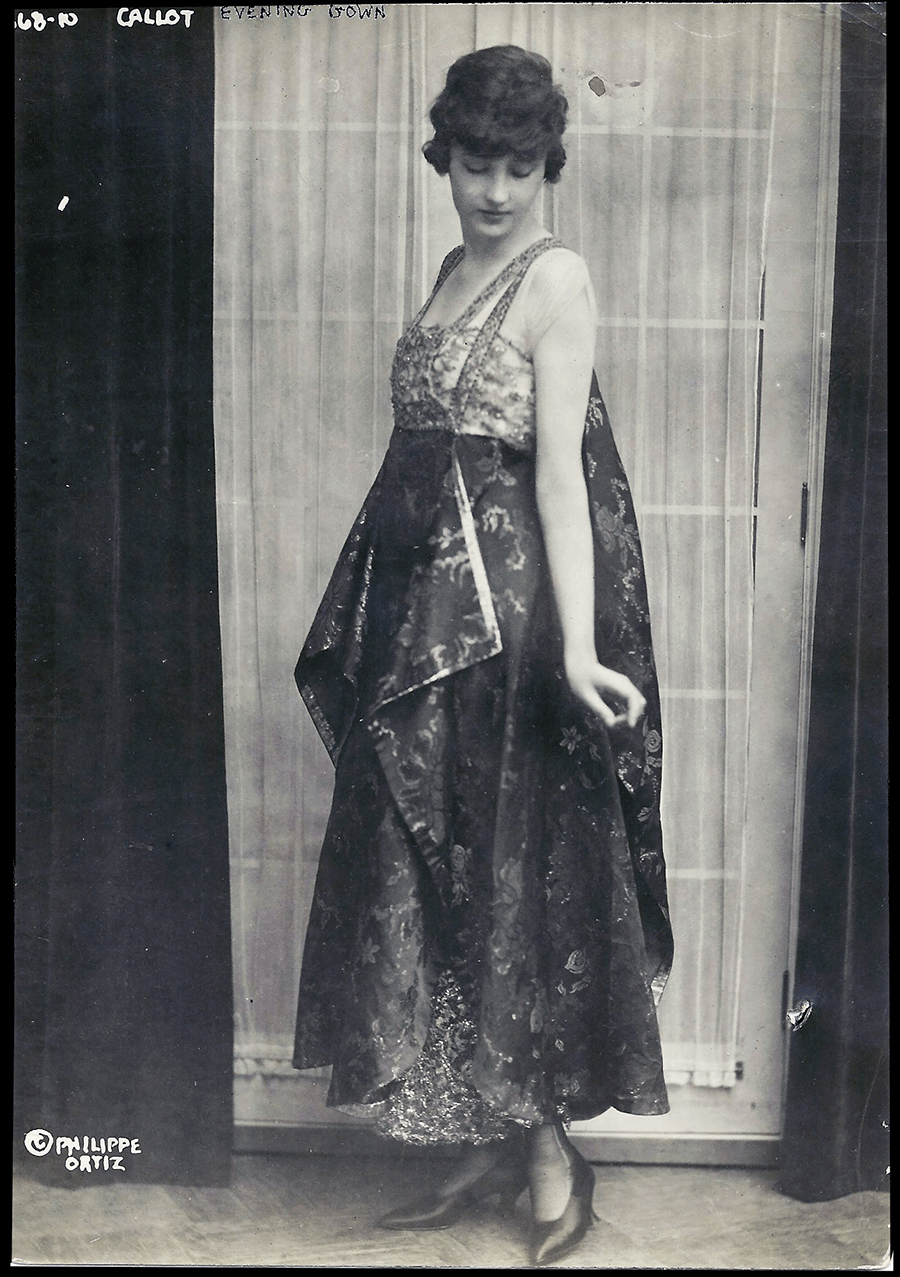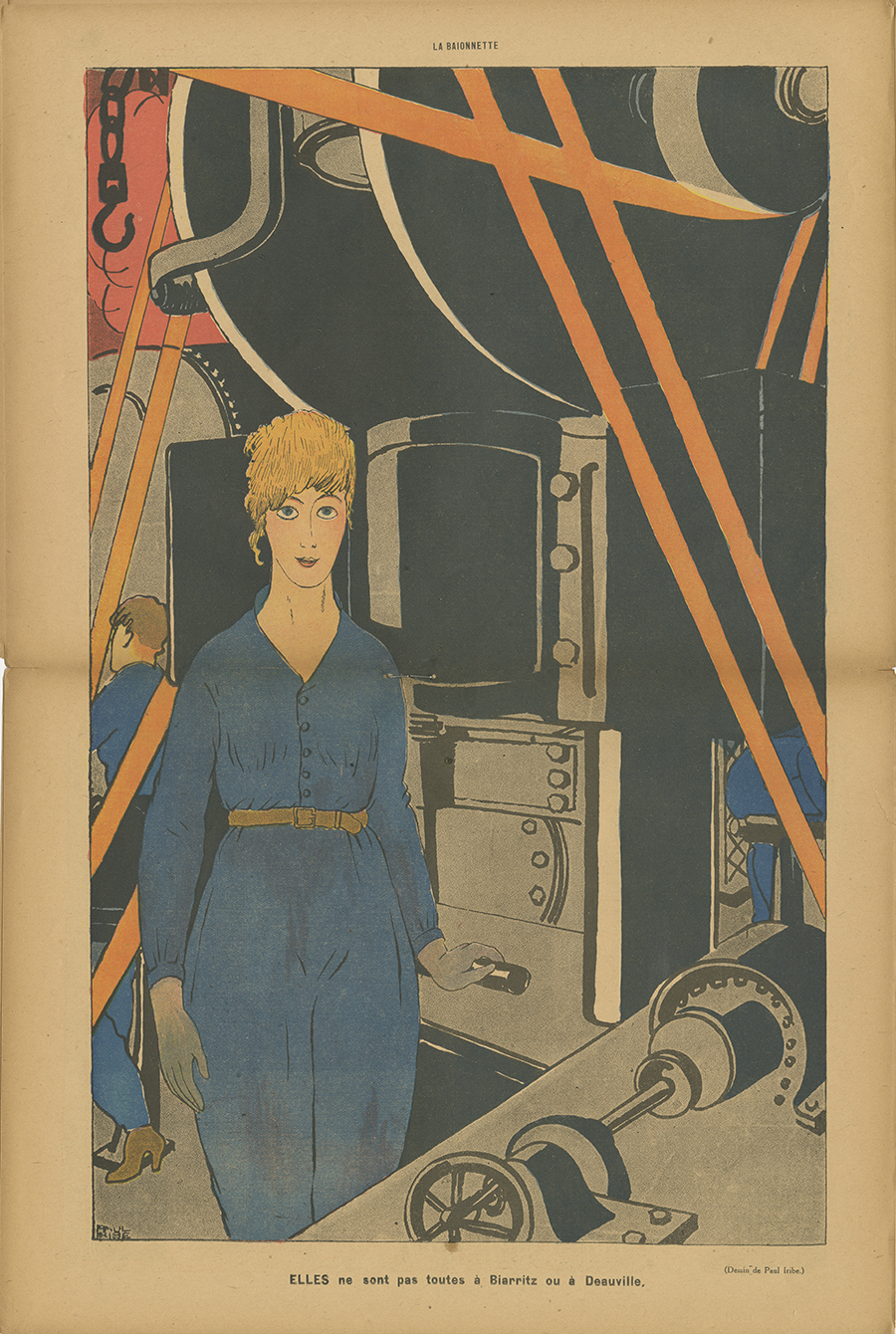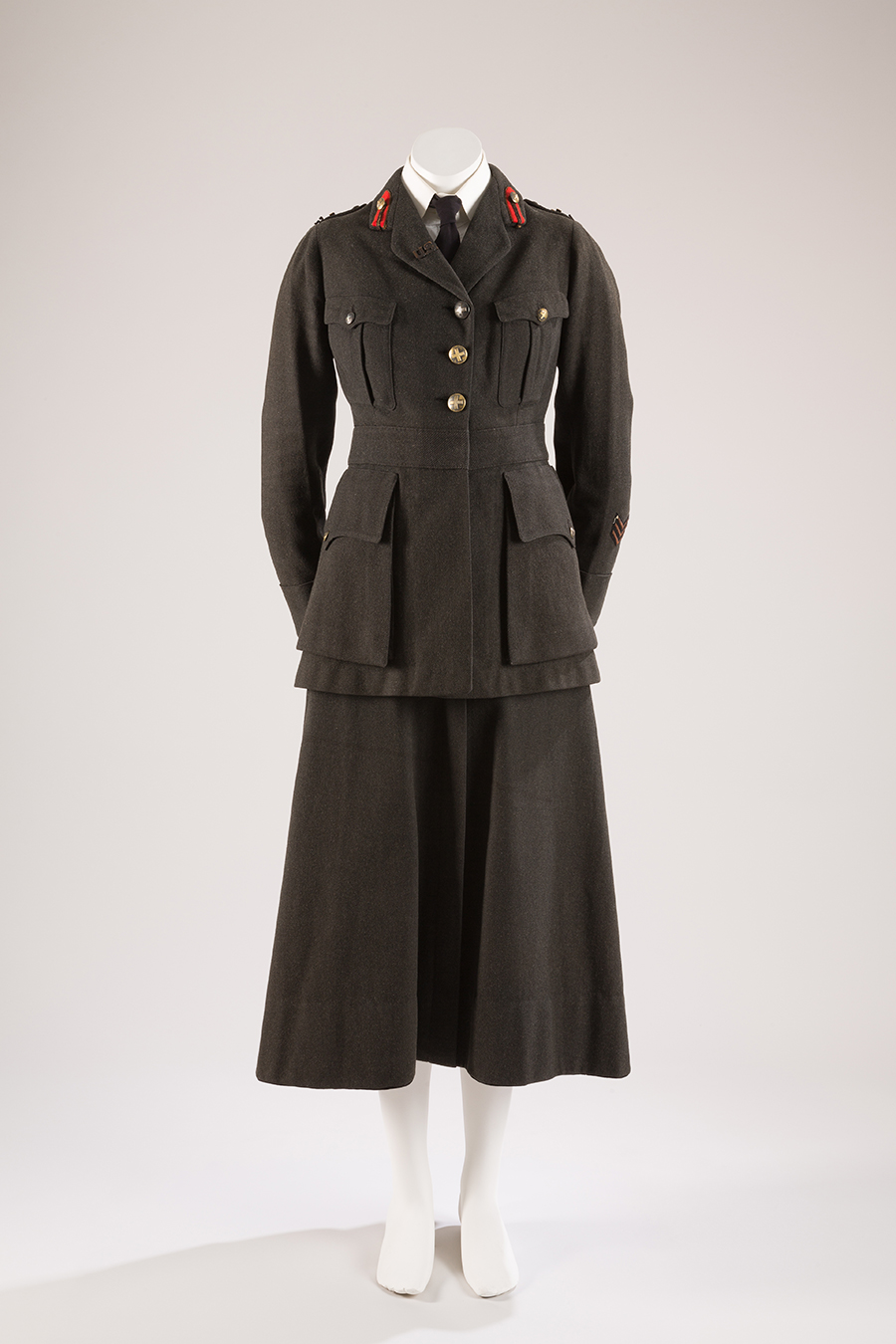Bard Graduate Center Wwi and Fashion

World War I conjures a detail set of associations. Nosotros are probable to envision battlefields lined with trenches and thick clouds of tear gas. We might equally imagine the dissociative horror of crush stupor, so vividly captured by the Expressionists.

Although such images are faithful representations of the disharmonize, they tell only office of its story, as demonstrated in 'French Fashion, Women, and The First World State of war,' the Bard Graduate Middle's fascinating report of style and gender in France from 1914 to 1918. Shifting attention to the home forepart, the show considers how French women experienced the Great War, casting it as a moment of sartorial revolution that brought with information technology the hope – if not the realization – of social revolution.

Though the art of haute couture and that of warfare seem to take piffling in mutual, the exhibition reveals that women's fashion was a critical source of French revenue throughout Earth War I. French designers – many of them female – kept the national economic system afloat, manufacturing shorter, simplified evening dresses for export, accompanied by propaganda that equated supporting Paris fashion houses to giving war machine aid. (For instance, a flared petticoat debuted before 1914 was rebranded a 'state of war crinoline'.) Women were as well crucial to maintaining traditionally masculine industries and public services, taking over positions equally munitions manufacturers, tram operators or chimneysweeps. This piece of work required comfortable wear, pushing women to adopt looser and more than androgynous apparel, including pants and overalls, thus further accelerating the shift toward straighter silhouettes and higher hemlines.


As illustrated in a smart selection of advertisements, fashion plates and garments, in a brief span of four years, women'due south fashion went from frivolous to functional: out went the pouf and pain of prewar designs, such as the 'hobble skirt', so named because its tight sure-fire prevented walking. In came the narrow mid-length dresses we associate today with flappers or garçonnes, their French equivalent.


Liberating women's style unfortunately did not translate into women's political emancipation. (Suffrage did not come to French republic until the 1940s.) But as the exhibition proves, World War I was however an important step in the march toward women's rights – launching an unprecedented number of women into the workforce and allowing them to test new modes of self-expression.
'French Fashion, Women, & The First World War' is on view at the Bard Graduate Center, New York City until five January 2020.



0 Response to "Bard Graduate Center Wwi and Fashion"
Post a Comment